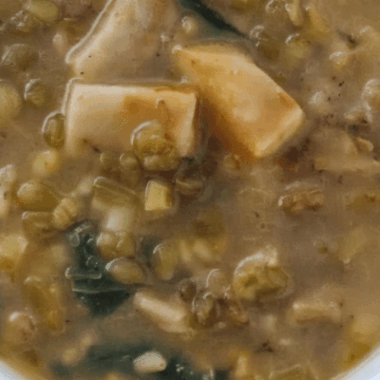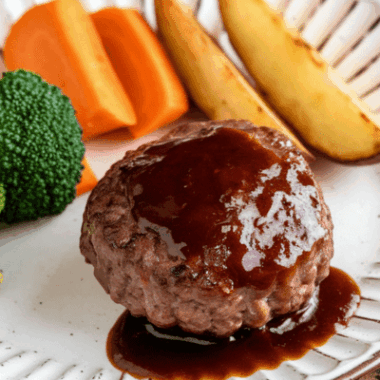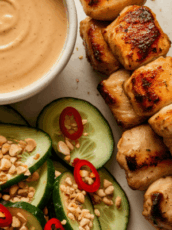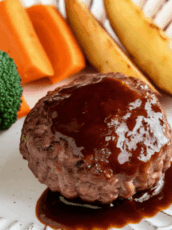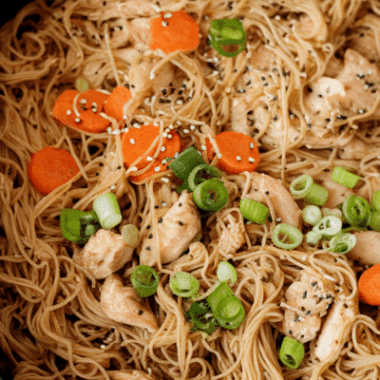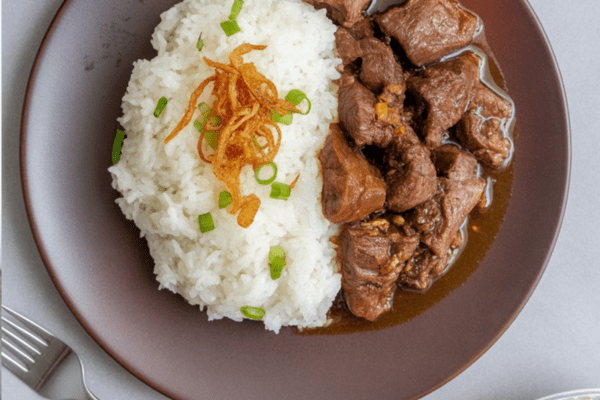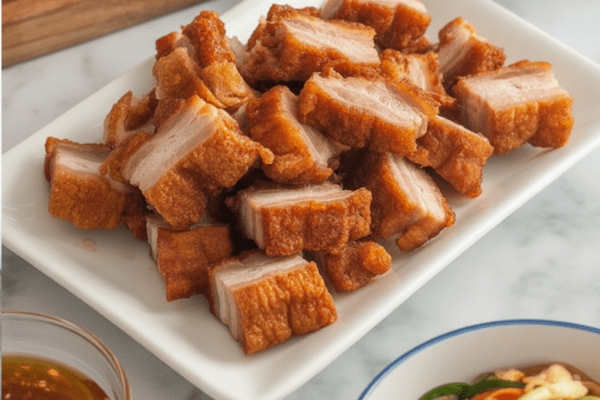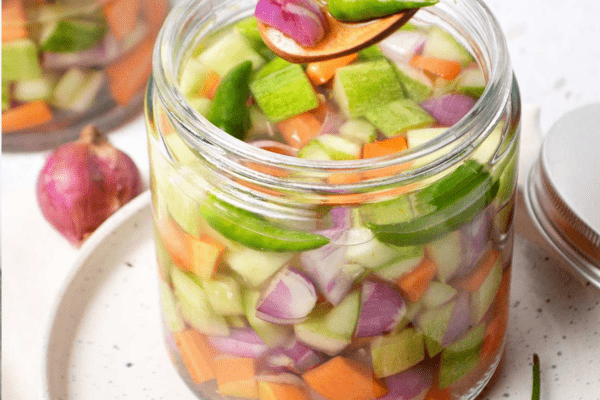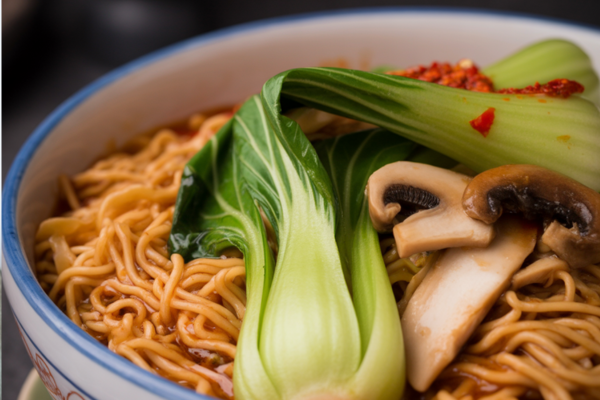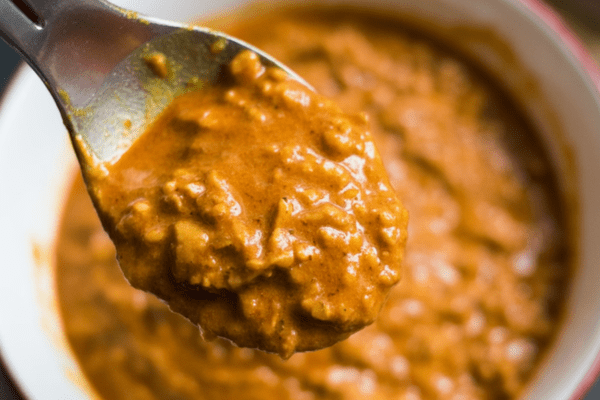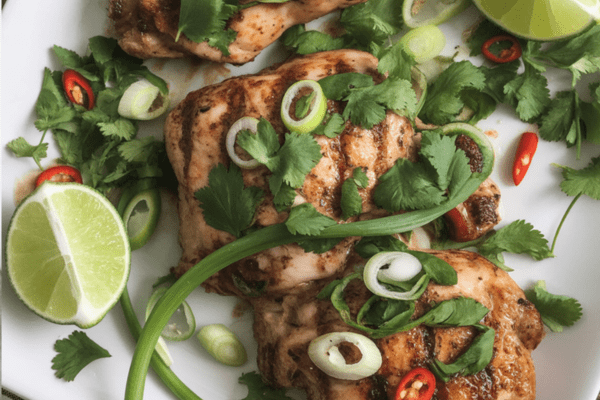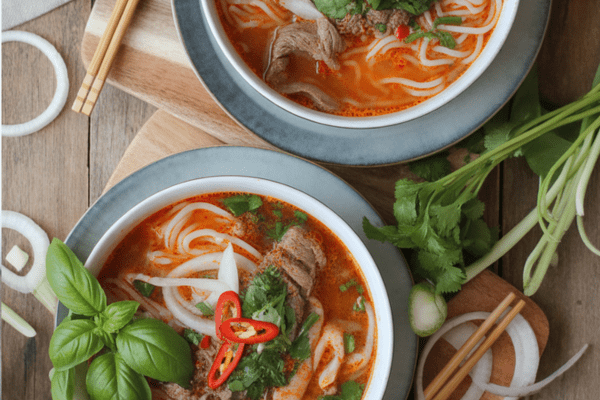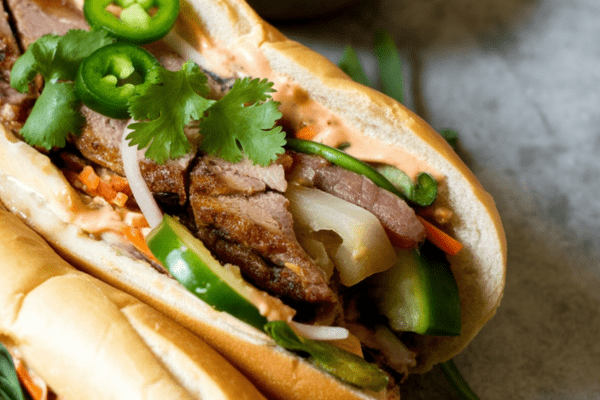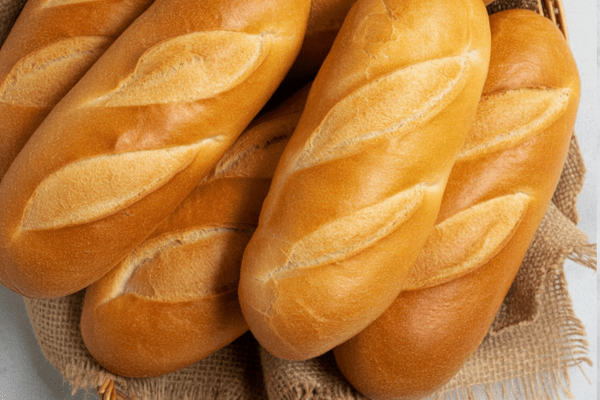This is my favorite way to make pancit bihon at home—a comforting Filipino classic with tender rice noodles tossed in a sweet-savory sauce, plenty of vegetables, and juicy chicken. It’s the kind of meal that hits the spot on a busy weeknight. Best part? It comes together in about 25 minutes, which means I can have dinner on the table faster than ordering takeout.
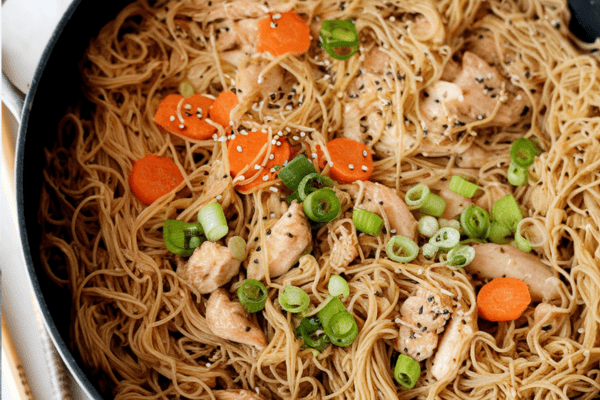
Why This Pancit Always Has a Spot on My Table
Whenever I make pancit bihon, it brings me straight back to family gatherings and potlucks where everyone is reaching for second helpings. There’s something deeply satisfying about the balance of flavors—savory, a little sweet, earthy from the veggies.
I love how flexible this dish is. You can clean out your fridge, toss in whatever vegetables you have, and make it taste like it’s been planned all along. It’s humble but special, which is why I never get tired of cooking it.
A Bit About Where Pancit Comes From
Pancit has roots in the Philippines, inspired by Chinese traders who sold noodle meals to factory workers needing a fast, hearty lunch. These vendors, called panciteros, turned noodles into the ultimate convenience food—simple, filling, and packed with flavor.
That history feels alive whenever I cook this dish. It’s food meant for sharing, for filling bellies after a long day, for feeding a crowd without breaking the bank.
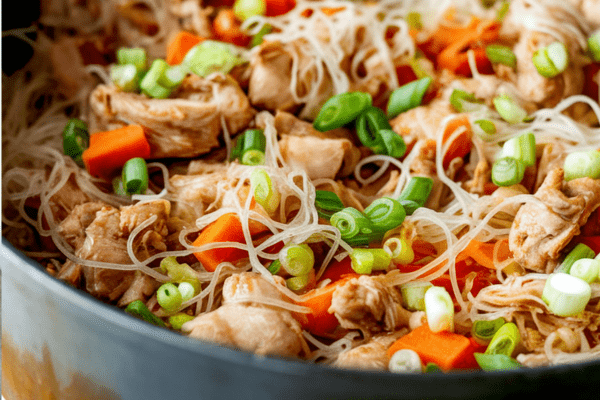
Ingredients You’ll Need (and How I Make It Work in My Kitchen)
- Oil – I often use peanut oil for the subtle nutty aroma, but honestly, whatever neutral oil is in my cabinet works.
- Chicken Breast – Boneless, skinless chicken makes it easy to slice and cook quickly. If I have leftover roast chicken, I’ll shred that in instead.
- Garlic and Onion – Can’t skip these. They’re the aromatic foundation. Sometimes I’ll add extra garlic because my family loves that punch.
- Bihon Noodles – Thin rice noodles. If I’m out, vermicelli works fine. It’s all about soaking up that sauce.
- Mixed Veggies – My usual mix is green beans, carrots, cabbage. But snow peas, bell peppers, or broccoli stems have all found their way into my pan.
- Sauce – Chicken stock, soy sauces (both dark and light), oyster sauce, and a pinch of sugar. I sometimes tweak this depending on what’s in the pantry.
- Seasoning – Salt and pepper to taste.
I really love that nothing in this list is hard to find. I’ve made this with odds and ends from the fridge and it always works.
Other Proteins I Use When I Want a Change
While chicken is my default, I often mix things up:
- Seafood – Shrimp or squid for a more coastal vibe. Even a firm white fish holds up well.
- Beef or Pork – Great when I want something heartier. Thinly sliced pork belly is a guilty favorite.
- Vegetarian Options – Tofu or tempeh work beautifully. If I’m cooking for vegan friends, I use vegetable broth and a vegan oyster sauce substitute.
Honestly, pancit is all about what you have on hand. I’ve even used leftover holiday ham diced up fine.
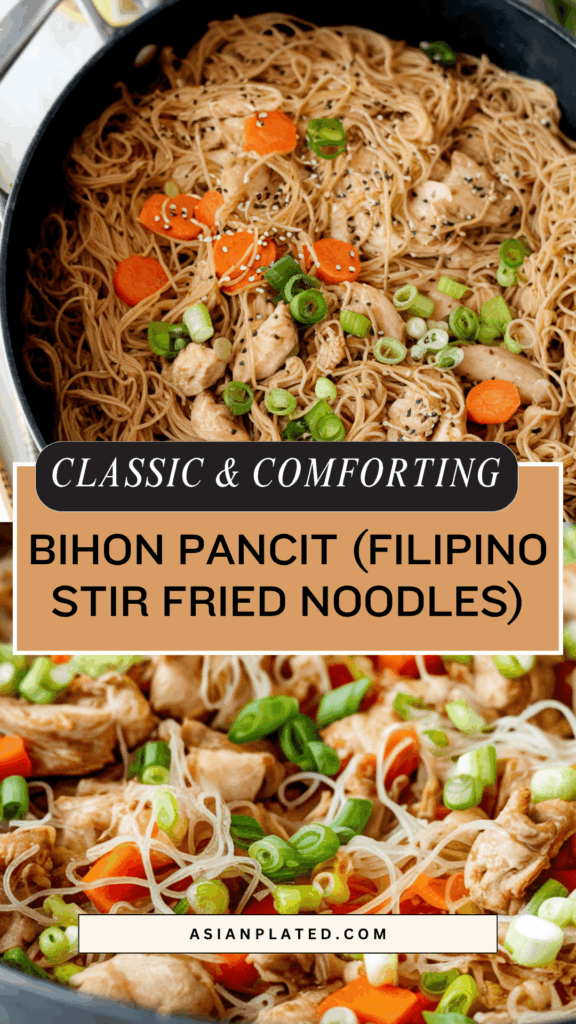
My Step-by-Step Method
I’m a big believer in having everything prepped before I start. It saves so much time and stress.
- Sauce First – I whisk it all together before anything hits the pan. That way I’m not scrambling while things are cooking.
- Chicken – Quick sear in a hot pan. Don’t crowd it so it gets a nice bit of browning. I set it aside once done.
- Garlic and Onion – These go in next. The smell alone gets everyone wandering into the kitchen asking when dinner will be ready.
- Veggies and Chicken Together – I toss the chicken back in with the veggies. Just enough time to soften them while keeping a bit of crunch.
- Sauce In – Pour it in and let it bubble. That’s when the magic happens.
- Noodles Last – I lay them on top and gently work them into the sauce so they soak up every bit of flavor.
- Final Seasoning – Taste and adjust. I like to serve it straight from the pan with extra lemon wedges on the side.
It’s a quick rhythm once you get the hang of it. Perfect for busy evenings.
My Favorite Tip for Better Pancit
Pay attention to the veggies. You want them tender but with a hint of crunch so the dish doesn’t turn into mush. I usually only stir-fry them for 2 or 3 minutes before adding the sauce. That balance with the soft noodles and juicy chicken is the real trick.
Keeping Leftovers Fresh
- Fridge – Let it cool first. I usually pack it into a sealed container and keep it for up to 3 days. It actually tastes great the next day.
- Freezer – I skip freezing it. The noodles don’t handle thawing well and tend to get soggy.
- Reheating – I usually microwave it with a damp paper towel over the top so the noodles stay moist. About 1-2 minutes on medium or high does the job.
What I Like to Serve on the Side
Pancit bihon can stand on its own but I love putting it alongside:
- Pandesal—those soft rolls are perfect for mopping up sauce.
- Stir-fried green beans or eggplant.
- A simple cucumber salad with a bit of chili oil for a cool, spicy contrast.
- Fried egg rolls or lumpia if I’m feeding a crowd.
- Even a green salad with ginger dressing for something fresh.
It’s one of those meals you can make as simple or as complete as you want.
Bihon Pancit (Filipino Stir Fried Noodles)

Nothing says comfort quite like a steaming plate of pancit — a staple at Filipino gatherings and always a crowd favorite. This version is light yet hearty, packed with savory goodness and ready in about 20 minutes.
Ingredients
- 1 pound boneless, skinless chicken breast, cut into bite-sized pieces
- 1 tablespoon peanut or vegetable oil
- 2 cloves garlic, minced
- 1 small onion, finely chopped
- 1 ½ cups assorted vegetables (think shredded cabbage, carrots, green beans, scallions)
- 8 oz package bihon noodles (also called rice or vermicelli noodles)
- Salt and pepper, to taste
- Lemon wedges, for serving (optional)
For the Sauce
- 2 cups low-sodium chicken broth (or vegetable broth for a plant-based version)
- 2 tablespoons dark soy sauce
- 2 tablespoons regular soy sauce
- 1 tablespoon oyster sauce (or a vegan alternative: soy sauce + ½ teaspoon sugar)
- 1 teaspoon sugar
Instructions
- Sear the chicken.Heat oil in a large wok or deep skillet over medium flame. Add chicken and sauté until fully cooked and lightly golden. Remove from the pan and set aside.
- Build the flavor base.In the same pan, toss in the garlic and onion. Sauté until fragrant and the onion becomes translucent, about 2 minutes.
- Toss in the veggies and chicken.Return the cooked chicken to the pan, then add your medley of vegetables. Season with a pinch of salt and pepper. Stir-fry for another 2–3 minutes until the vegetables begin to soften but still keep their crunch.
- Add the sauce.Pour in the prepared sauce mixture. Let it come to a gentle boil.
- Cook the noodles.Add the bihon noodles directly into the bubbling sauce. Stir frequently, allowing the noodles to soak up all that savory goodness. Cook for 3–4 minutes, or until the noodles are soft. If the pan dries out, add a splash of broth or water.
- Final touches.Taste and adjust seasoning as needed. Serve warm, with lemon wedges on the side for a citrusy kick.
Notes
- Storage: Any leftovers can be stored in an airtight container in the fridge for up to 3 days.
- Reheating: Pop it in the microwave for 1–2 minutes, lid slightly open.
- Variations: Swap the chicken for pork, shrimp, beef, or tofu — or a mix! A splash of sesame oil adds a nutty note, while chili oil brings some heat. Feeling indulgent? Drizzle a little sweet chili or tonkatsu sauce.
Nutrition Information:
Yield: 4 Serving Size: 1Amount Per Serving: Calories: 412Total Fat: 10gSaturated Fat: 2gTrans Fat: 0gUnsaturated Fat: 7gCholesterol: 96mgSodium: 1227mgCarbohydrates: 34gFiber: 5gSugar: 5gProtein: 45g
Asianplated.com, occasionally offers nutritional information for recipes contained on this site. This information is provided as a courtesy and is an estimate only. This information comes from online calculators. Although allchickenrecipes.com attempts to provide accurate nutritional information, these figures are only estimates.
Common Questions I Get About This Dish
Can I make it ahead of time?
Yes. It reheats well. I often cook the sauce and chicken in advance and just finish with the noodles when I’m ready to serve.
Do I need a wok?
A large, deep skillet works fine. I use my big non-stick pan all the time.
Can I make it vegan?
Absolutely. Swap the chicken for tofu or tempeh, use veggie broth, and pick a vegan oyster sauce.
How do I keep the noodles from clumping?
Soaking or rinsing them before cooking helps. I also try not to overcook them so they stay separate and silky.
If you’re craving something comforting and satisfying, give this bihon pancit a try. It’s a great way to bring a little bit of Filipino tradition to your own table—no special occasion required.
Try other Filipino recipes:

